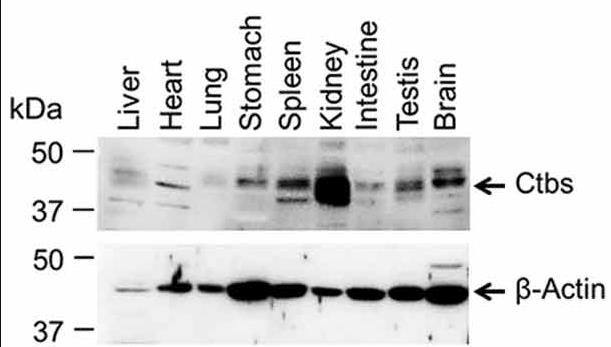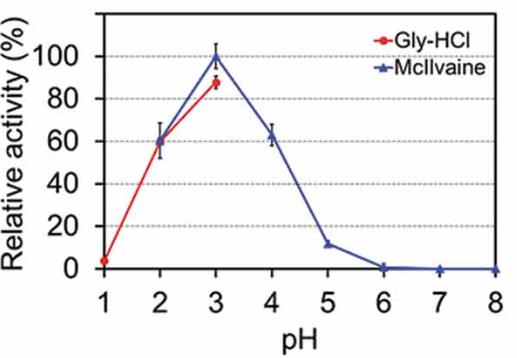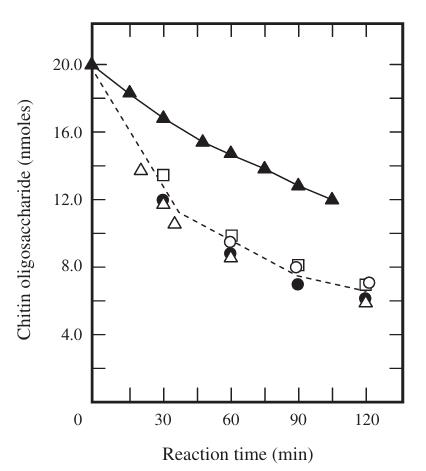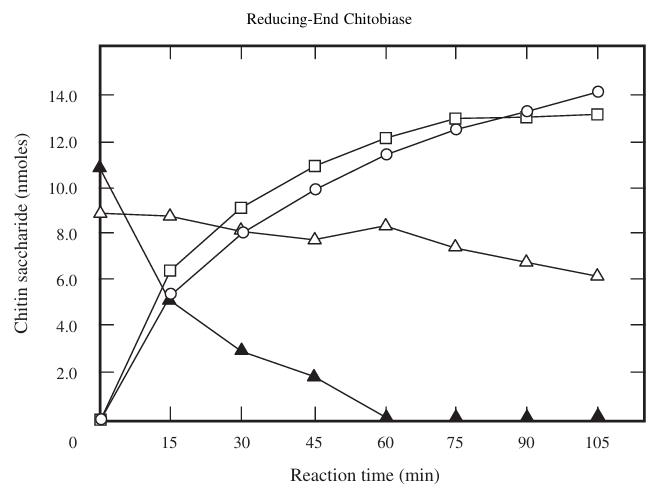Recombinant Zebrafish CTBS
| Cat.No. : | CTBS-2874Z |
| Product Overview : | Recombinant Zebrafish CTBS full length or partial length protein was expressed. |
- Specification
- Gene Information
- Related Products
- Case Study
- Application
- Download
| Species : | Zebrafish |
| Source : | Mammalian Cells |
| Tag : | His |
| Form : | Liquid or lyophilized powder |
| Endotoxin : | < 1.0 eu per μg of the protein as determined by the LAL method. |
| Purity : | >80% |
| Notes : | This item requires custom production and lead time is between 5-9 weeks. We can custom produce according to your specifications. |
| Storage : | Store it at +4 oC for short term. For long term storage, store it at -20 oC~-80 oC. |
| Storage Buffer : | PBS buffer |
| Gene Name | ctbs chitobiase, di-N-acetyl- [ Danio rerio (zebrafish) ] |
| Official Symbol | CTBS |
| Gene ID | 553763 |
| mRNA Refseq | NM_001020729 |
| Protein Refseq | NP_001018565 |
| UniProt ID | Q504D9 |
| ◆ Recombinant Proteins | ||
| CTBS-2209HF | Recombinant Full Length Human CTBS Protein, GST-tagged | +Inquiry |
| CTBS-729H | Recombinant Human CTBS Protein, Myc/DDK-tagged, C13 and N15-labeled | +Inquiry |
| CTBS-1658H | Recombinant Human CTBS protein, His & T7-tagged | +Inquiry |
| CTBS-2056H | Recombinant Human CTBS Protein, GST-tagged | +Inquiry |
| CTBS-1862H | Recombinant Human CTBS Protein (Glu47-Arg385), N-His tagged | +Inquiry |
| ◆ Cell & Tissue Lysates | ||
| CTBS-7214HCL | Recombinant Human CTBS 293 Cell Lysate | +Inquiry |
Case 1: Ohno M, et al. Biosci Biotechnol Biochem. 2020
Di-N-acetylchitobiase (Ctbs) breaks down the chitobiose core of asparagine-linked glycans. This study investigated if Ctbs can also break down chitin-oligosaccharides into GlcNAc in mice. Ctbs mRNA and protein in various mouse tissues, including the stomach, with optimal enzyme activity at pH 3.0 and 45°C. The recombinant Ctbs effectively hydrolyzed (GlcNAc)3 and (GlcNAc)6 into GlcNAc under these conditions, showing higher efficiency with (GlcNAc)3 and (GlcNAc)4 substrates. This indicates that Ctbs can process chitin-oligosaccharides and specific glycan residues in mice, producing GlcNAc.

Fig1. Ten micrograms of soluble proteins were analyzed by Western blotting using anti-mouse Ctbs and anti-β-actin antibodies.

Fig2. Effects of pH on recombinant Ctbs activity.
Case 2: Aronson NN, et al. Biosci Biotechnol Biochem. 2006
Di-N-acetylchitobiase, a glycoside hydrolase family 18 enzyme, specifically cleaves the alpha-anomer of chitooligosaccharides, releasing alpha-D-GlcNAc. It preferentially hydrolyzes chitin tri- to hexasaccharides at the same rate, but chitobiose at a slower pace. The enzyme's activity suggests it binds chitooligosaccharides through three subsites (-2, -1, +1), with the +1 site being alpha-anomer specific.

Fig1. Kinetic Analysis of Chitooligosaccharide Hydrolysis by Recombinant Human Chitobiase.

Fig2. Kinetic Analysis and Anomeric Structure of Products Formed by Recombinant Human Chitobiase from Chitotriose.
Recombinant Zebrafish CTBS (Chondroitinase ABC) is an enzyme that plays a crucial role in the breakdown of chondroitin sulfate, one of the major components of cartilage. This enzyme is produced by removing the chondroitin sulfate chains from proteoglycans, which can reduce the viscosity of the extracellular matrix and enhance cell migration and tissue repair.
In practical applications, Recombinant Zebrafish CTBS is primarily used in research settings to study the role of chondroitin sulfate in various biological processes. It aids in the investigation of neuronal regeneration, as it can clear inhibitory chondroitin sulfate proteoglycans that may hinder axonal growth and regeneration after injury. Furthermore, it is also used in the study of cancer cell migration and invasion, given that these processes involve interactions with the extracellular matrix.
The enzyme is typically produced in mammalian cells and is available in liquid or lyophilized powder form, with a purity of over 80%. It is important to note that CTBS should be stored at +4°C for short-term and at -20°C to -80°C for long-term storage to maintain its activity. It is worth mentioning that the product is intended for research use only and is not to be used for clinical applications.
Not For Human Consumption!
Inquiry
- Reviews
- Q&As
Ask a Question for All CTBS Products
Required fields are marked with *
My Review for All CTBS Products
Required fields are marked with *
Inquiry Basket


